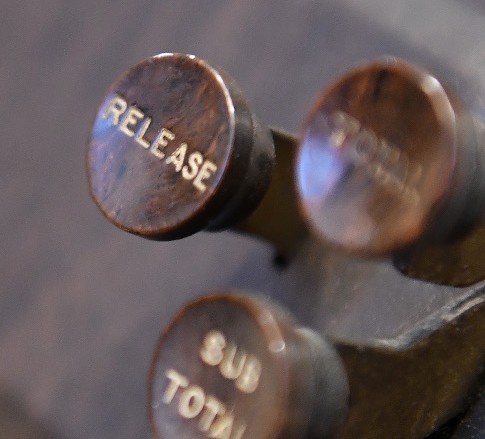SBA PPP Loan Reviews Pose Risks For Both Borrowers and Lenders
May 28, 2020
By: Mark A. Mangano
It is well known that the quality of a loan portfolio is dependent on the quality of the loan files. That is certainly true of loan portfolios created under the Paycheck Protection Program (PPP). Documentation will be the key to ensuring positive outcomes for both borrowers and lenders.
The Small Business Administration (SBA) has indicated its intention to review many loans made under the PPP. Those reviews will stress questions of borrower eligibility for both PPP loans and forgiveness. The reviews may also include evaluation of the lender’s documentation. In cases where a lender’s documentation of adherence to program requirements is lacking, the lender’s loan fees and guaranty may be lost.
The Treasury Department and SBA issued the fifteenth interim rule related to the PPP: “Business Loan Program Temporary Changes; Paycheck Protection Program-SBA Loan Review Procedures and Related Borrower and Lender Responsibilities” on May 22, 2020 (Fifteenth IFR). The Fifteenth IFR provides much needed guidance on the loan review process, suggests a process for borrowers to appeal denial of eligibility or forgiveness, and reminds lenders of their obligations under the PPP.
Loan review process
The SBA reaffirmed its previous intention to review any PPP loan that the SBA deems appropriate. Reviews are not limited to loans over $2,000,000. Loans will be reviewed for borrower eligibility, loan amounts, use of proceeds, and forgiveness amounts.
The SBA may undertake a review of any loan at any time. Borrowers are reminded of their obligation to retain PPP documentation for six years after the loan is forgiven or repaid in full. Lenders are reminded of their similar obligation under 13 CFR 120.461(d).
If the SBA review indicates that the borrower may have been ineligible for the loan or ineligible for the loan amount or forgiveness amount, the SBA will either directly or through the lender request additional information from the borrower. If the borrower fails to respond, the borrower may be found to be ineligible in some manner.
If the SBA determines that the borrower was ineligible for a PPP loan, the loan cannot be forgiven. Upon finding ineligibility for the PPP, the SBA may seek repayment of the loan or pursue other remedies. Significantly, if a borrower is found to be ineligible for the PPP loan, the recourse limits against individual shareholders, members, or partners of a PPP borrower for nonpayment are inapplicable.
If the SBA undertakes a review of a loan, it will notify the lender in writing. The lender must notify the borrower within 5 business days after receiving the notice from the SBA. Notice of a loan review triggers a number of document production and request requirements for lenders.
The SBA has indicated its intention to issue a separate interim final rule to address an appeal process for borrowers that have been found to be ineligible for the PPP or for the amount of loan received or forgiveness requested.
Loan forgiveness process
For every PPP Loan Forgiveness Application (Application) the lender is required to:
- Confirm receipt of the borrower certifications contained in the Application.
- Confirm receipt of the documents borrowers are required to submit by the Application.
- Confirm enumerated borrower calculations on the Application.
- Confirm that the borrower correctly calculated payroll costs on line 10 of the Application by dividing the Cash Compensation of line 1 of the Application by .75.
The borrower is responsible for the accuracy of the calculations. Lenders are responsible for a good faith review of the calculations and supporting documents.
Timing of forgiveness process
The lender must issue a decision to the SBA on a loan forgiveness application not later than 60 days after receipt of a complete loan forgiveness application from the borrower. The lender must request payment from the SBA at the time the lender issues its decision to the SBA. Subject to the SBA loan review process, the SBA will pay the lender the appropriate forgiveness amount not later than 90 days after the lender issues its decision to the SBA.
If the lender’s decision is to deny the Application, the lender must notify the borrower of its decision. The borrower then has 30 days from notice from the lender to request that the SBA review the lender’s decision.
Borrowers should expect that forgiveness of their loans, if approved, may take as much as five months from the time the borrower submits an Application. This may seem like a very long time. However, it may be a challenge to process thousands of forgiveness requests submitted at the same time in a timely fashion.
Implications for lenders
If at any time within one year after the loan was disbursed the SBA determines that a borrower was ineligible for a PPP loan the SBA will seek repayment of the lender processing fee from the lender.
At any time, if the SBA determines that the lender failed to satisfy the requirements applicable to the lender to confirm the information required by the SBA’s first interim final rule section III.3.b. or documentation collection and retention requirements in the lender application form (SBA Form 2484), the SBA will seek repayment of the lender processing fee from the lender and may determine that the loan is not eligible for a guaranty.
The PPP is a vast loan program rolled out in a short period of time. The pressure for both borrowers and lenders to apply for and process loans with tight time deadlines was intense. As loans are submitted for forgiveness the documentation may come under close scrutiny. It will be in the interests of both borrowers and lenders to work together to ensure that forgiveness submissions are accurate and complete. Working together they can reduce the likelihood of loans being flagged for SBA review.



